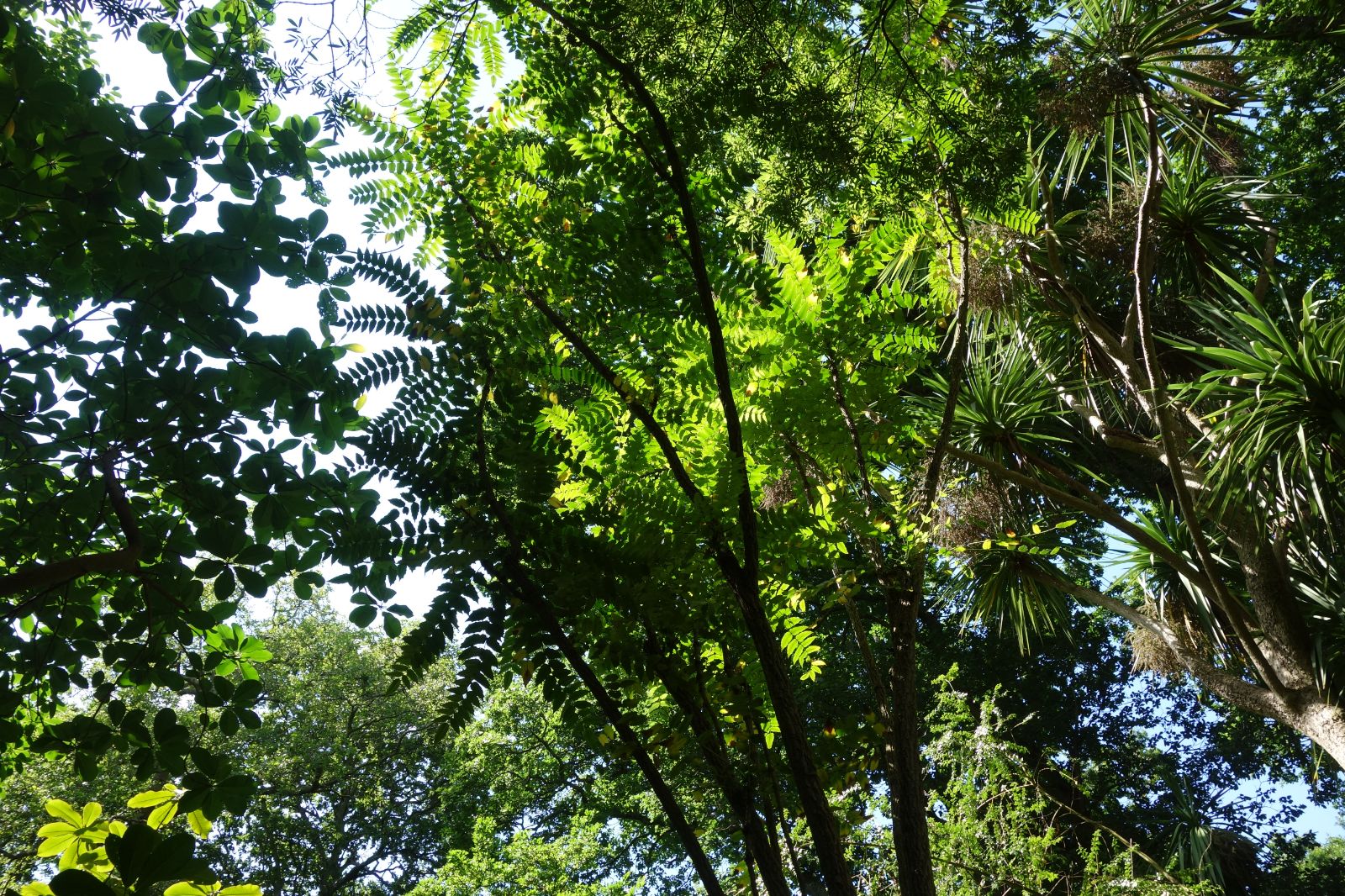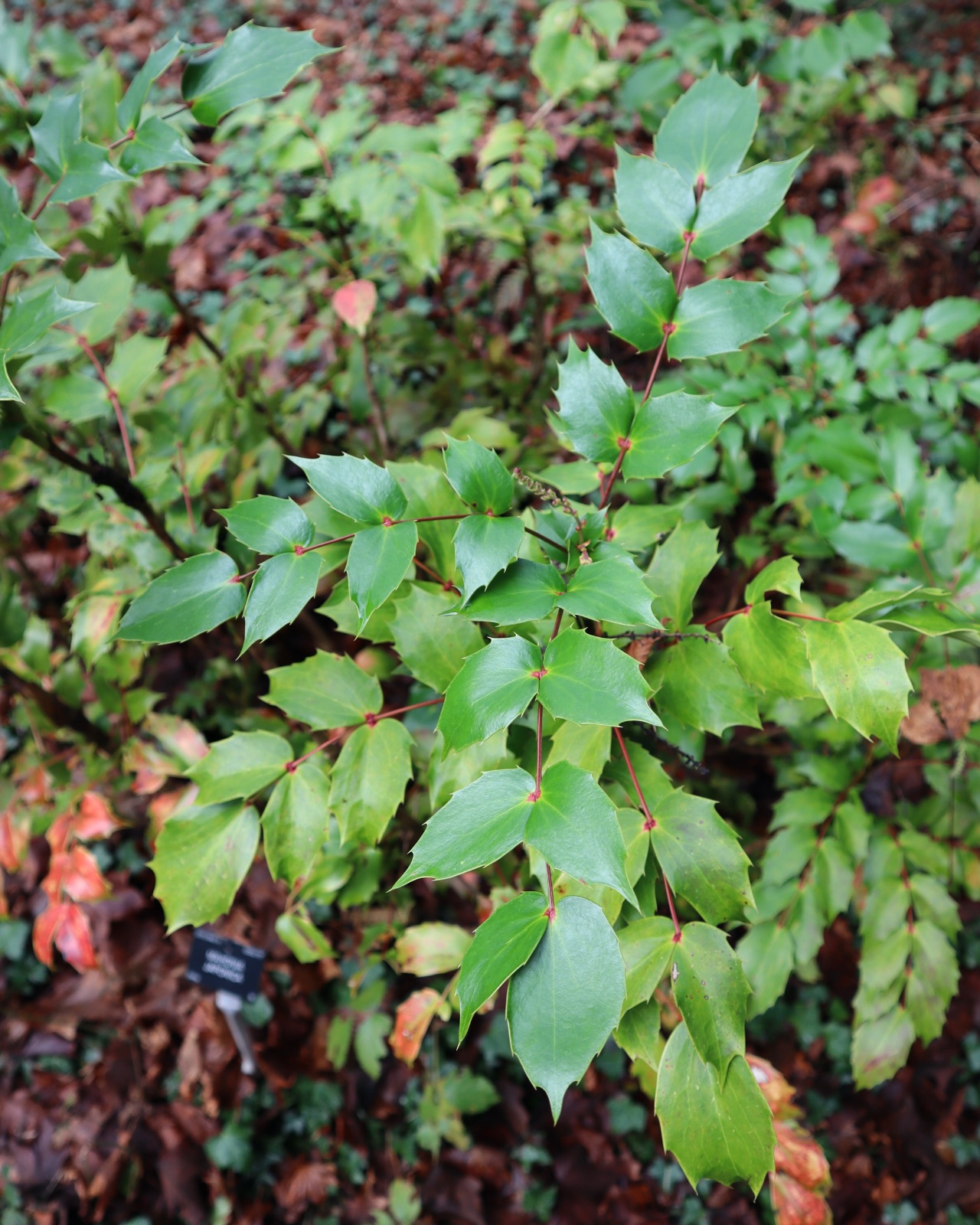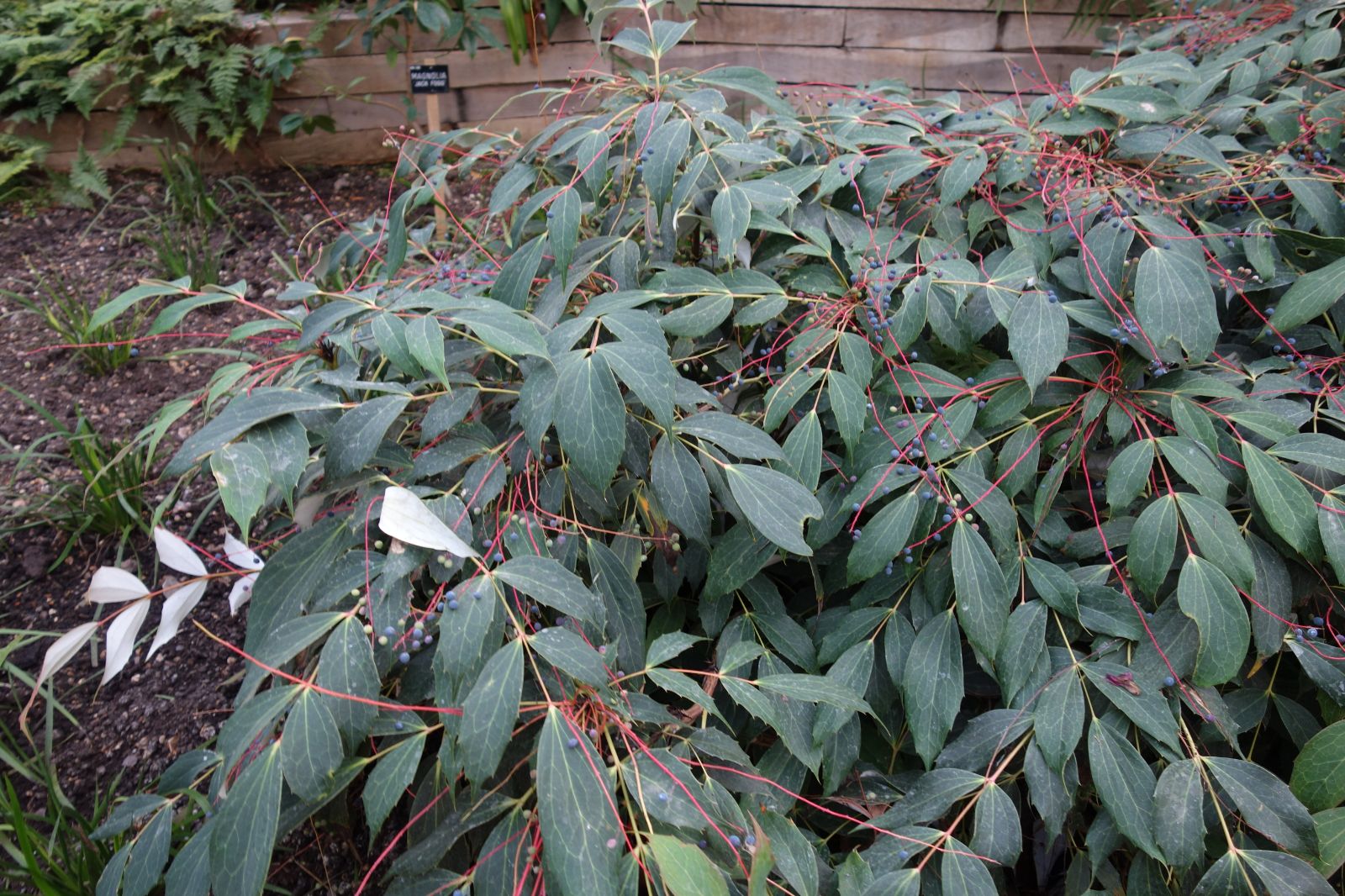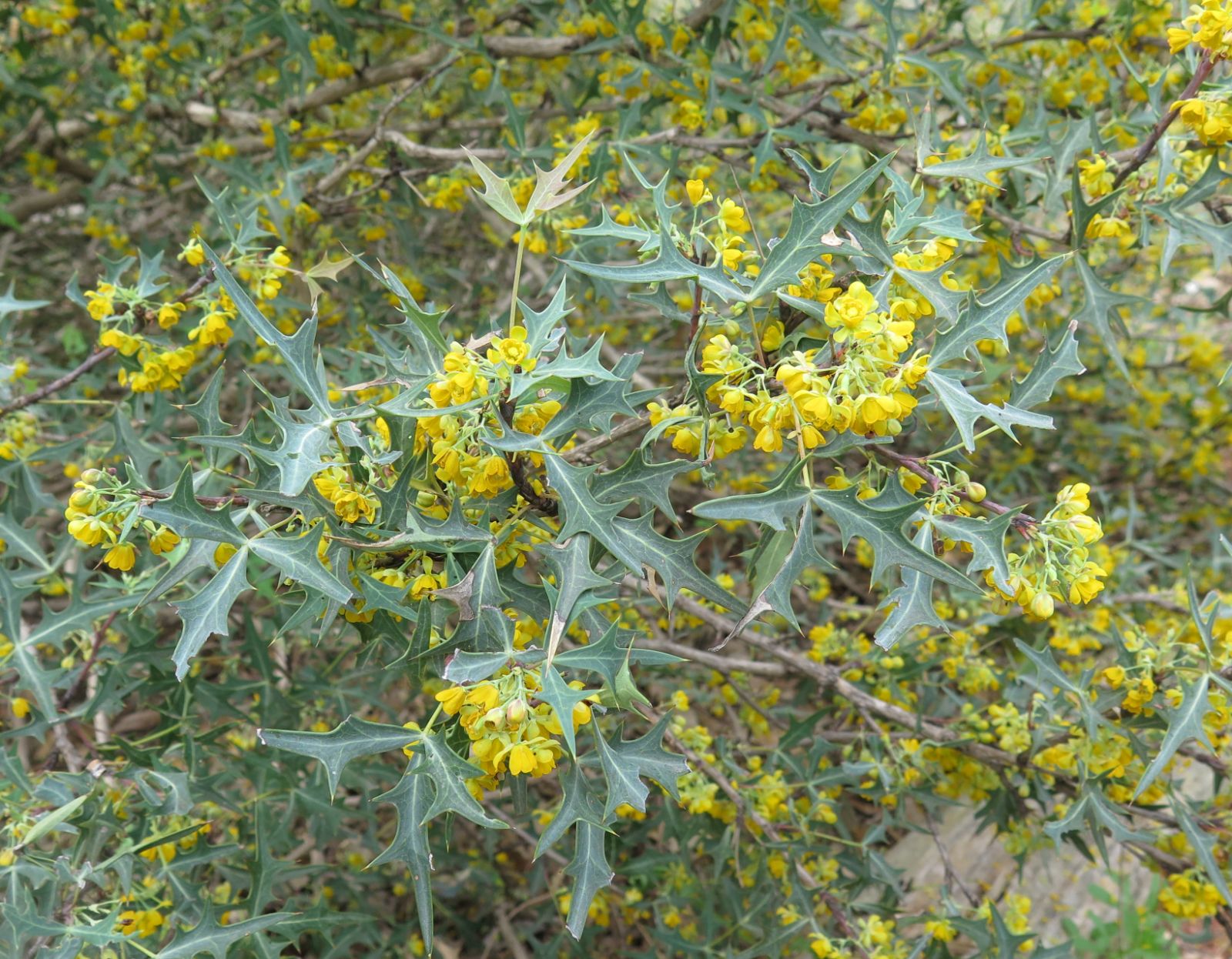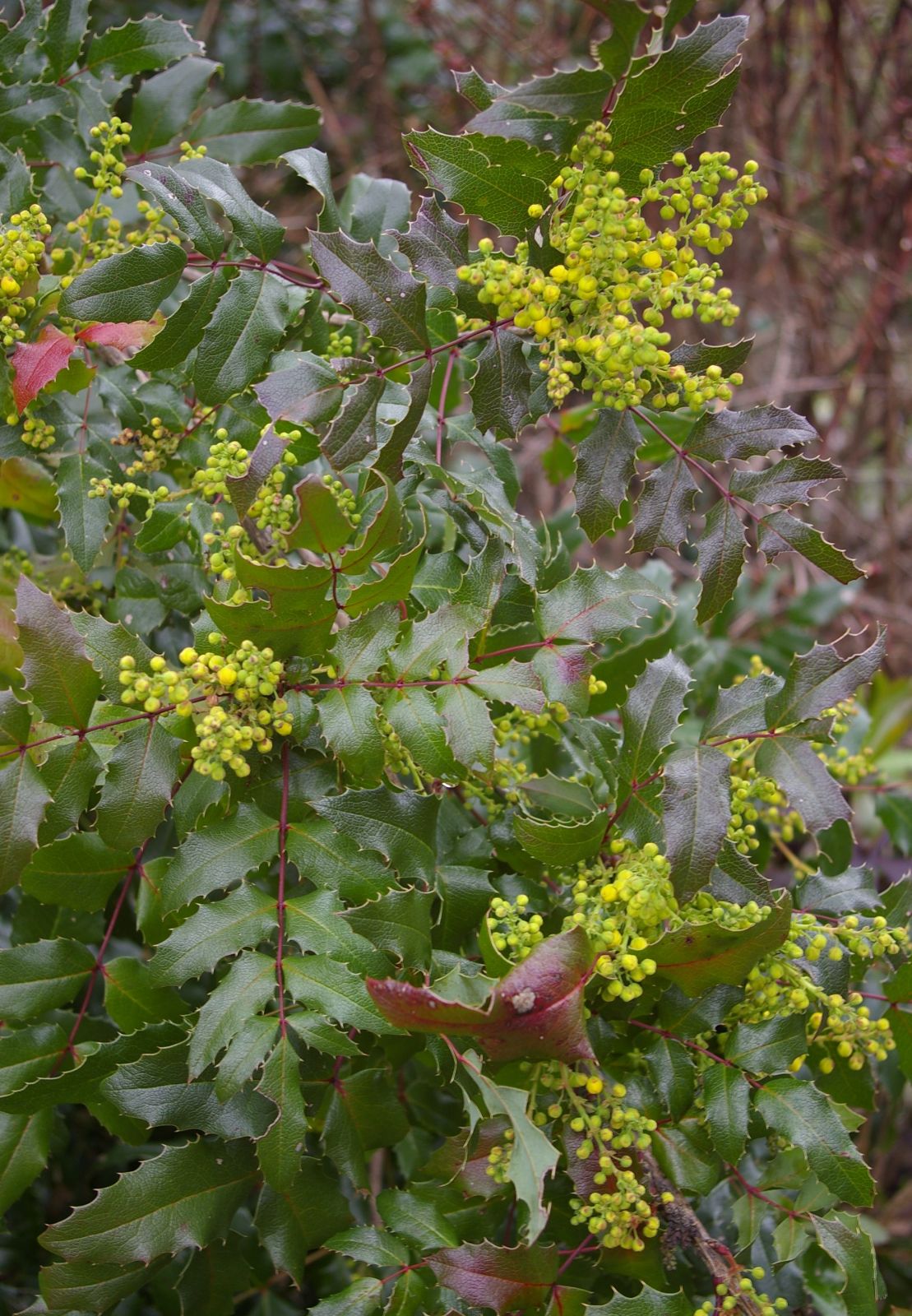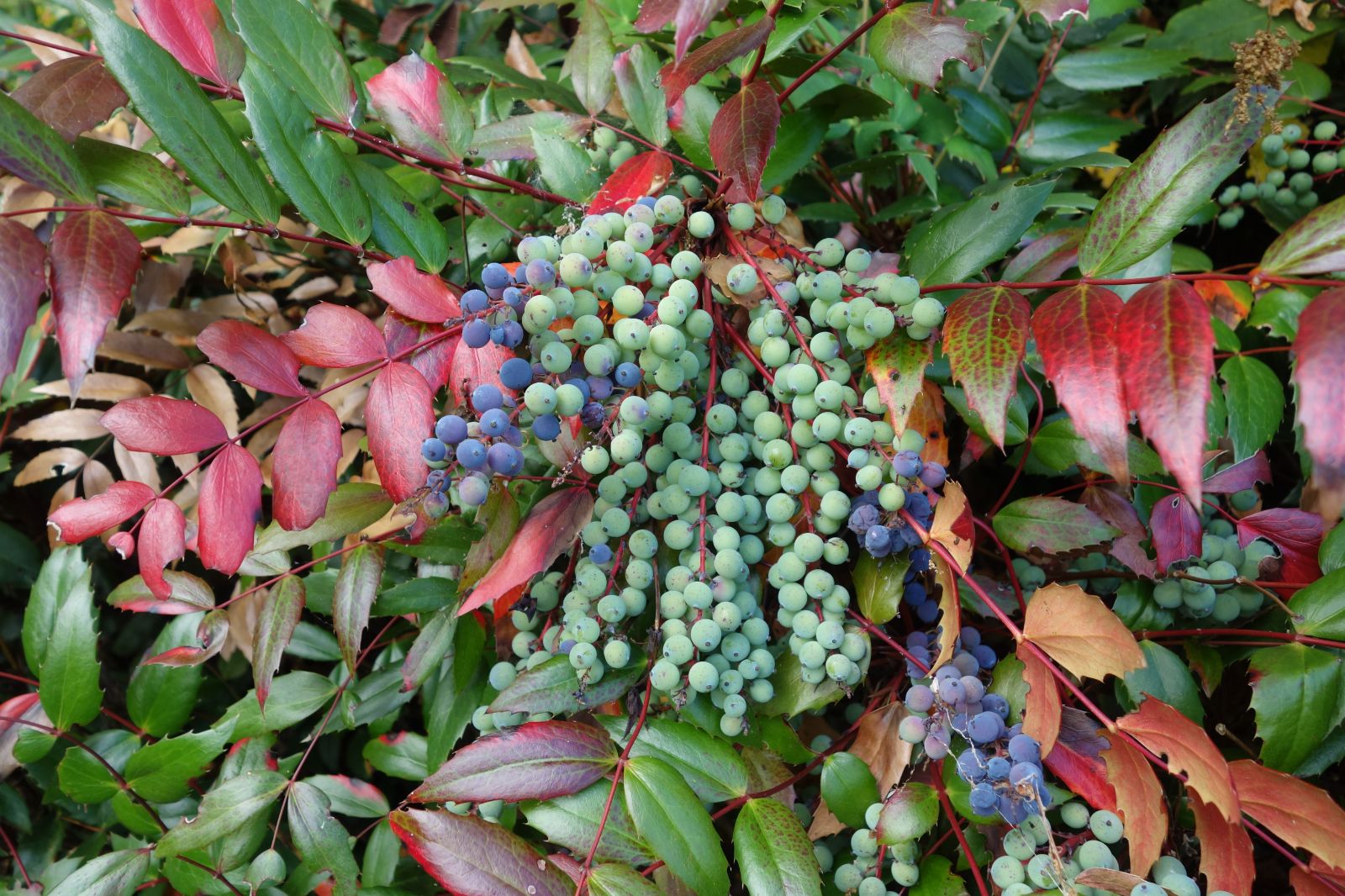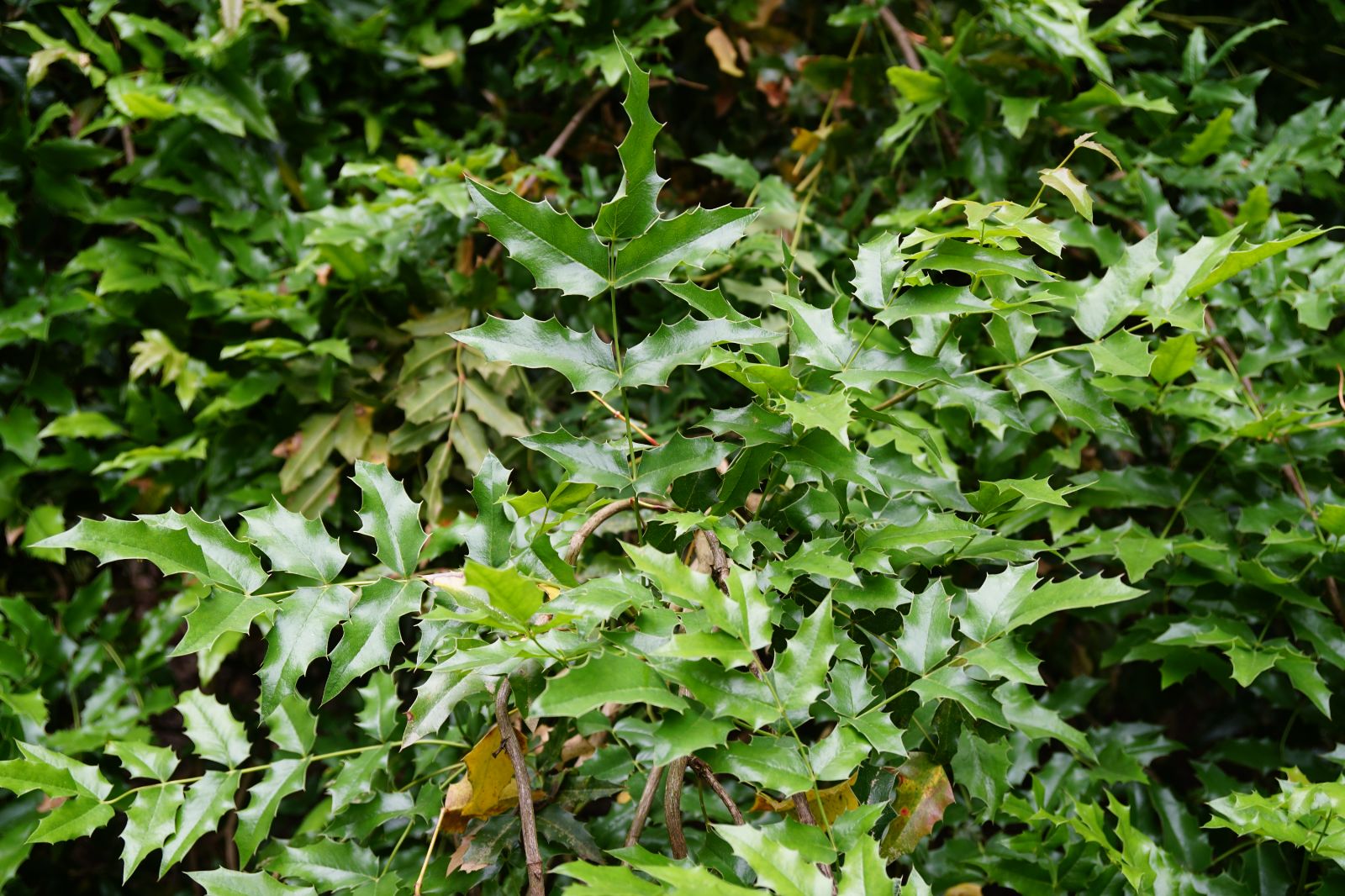Mahonia
Credits
Article from Bean's Trees and Shrubs Hardy in the British Isles
Recommended citation
'Mahonia' from the website Trees and Shrubs Online (treesandshrubsonline.
Family
- Berberidaceae
Species in genus
- Mahonia acanthifolia
- Mahonia aquifolium
- Mahonia arguta
- Mahonia 'Charity'
- Mahonia fortunei
- Mahonia fremontii
- Mahonia gracilipes
- Mahonia haematocarpa
- Mahonia 'Heterophylla'
- Mahonia japonica
- Mahonia lomariifolia
- Mahonia × media
- Mahonia nervosa
- Mahonia nevinii
- Mahonia pinnata
- Mahonia repens
- Mahonia schiedeana
- Mahonia trifolia
- Mahonia trifoliolata
A genus of evergreen shrubs very closely related to Berberis and often united with it. They are very distinct in their invariably evergreen character, in their simply pinnate foliage and in the absence of spines from their branches. In his monograph on Berberis and Mahonia Dr Ahrendt pointed out a further distinction: ‘that three-quarters of the species of Mahonia possess a form of inflorescence never found in the simple-leaved Berberis, a fascicle of several dense spike-like racemes. Only a minority share a Berberis-like form of inflorescence’. (The exceptions are all American species, in which the inflorescence is a panicle, a simple raceme or a few-flowered umbellate cluster.)
The genus contains some very handsome species, the usually prickly-margined leaves being dark and shining. They are not generally so hardy as the true barberries, but those that are hardy are amongst the handsomest of evergreens. All thrive in a good garden soil. The generic name commemorates Bernard M’Mahon, an American horticulturist who died in 1816. Over 100 species are recognised by Dr Ahrendt in his monograph.
From the Supplement (Vol.V)
The hardier cultivated mahonias are surveyed by H. J. van de Laar in Dendroflora No. 11/12, pp. 19–32 (1975).

